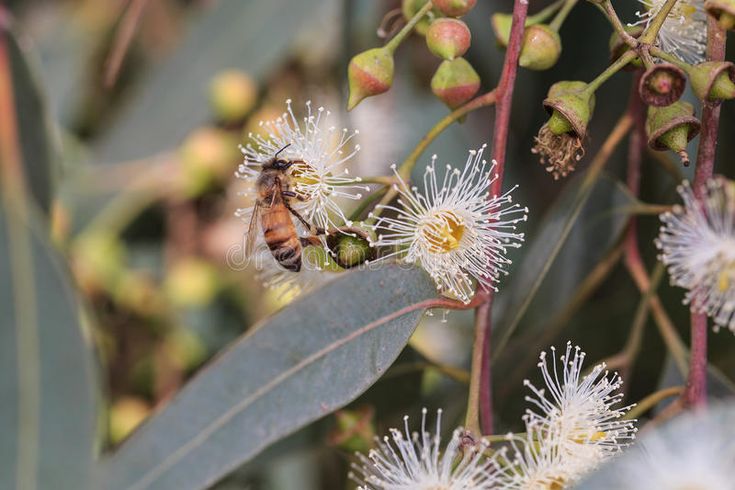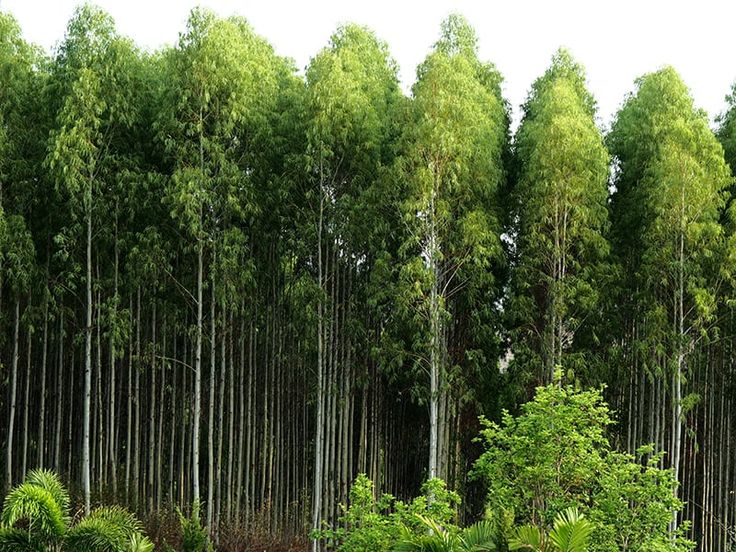Welcome to Pansofic Mall Online Shopping Store!
Nov 28, 2024 / By Admin Pansofic / in Natural Honey
Eucalyptus honey is a unique variety of honey made by honeybees that pollinate the blossoms of eucalyptus trees. In some cases, bees also collect honeydew, a sugary substance found on the bark of these trees. This honey is recognized for its distinct medium-dark color, which often has a reddish hue. The depth of the red tint becomes more pronounced with darker shades of eucalyptus honey, making it visually distinct.
In terms of flavor, eucalyptus honey offers a wide range, from tart and robust to sweet and mellow, depending on the tree species and region. It is best enjoyed in its raw, unfiltered, and unheated form to preserve its natural enzymes, nutrients, and unique taste profile.
Eucalyptus honey is not only a delightful addition to your pantry but also offers a range of health benefits due to its antibacterial and antioxidant properties, making it a favorite for both culinary and wellness uses.
Suggested Read :- Eucalyptus Honey: Your Natural Shield Against Cough and Cold
Eucalyptus honey originates from the blossoms of eucalyptus trees, which are found in diverse climates ranging from tropical to temperate regions. These trees are highly valued as a nectar and pollen source for honeybees wherever they grow. Globally, most commercially produced eucalyptus honey is sourced from Australia and South Africa, where the trees thrive in abundance.
In the United States, eucalyptus honey is primarily produced in California, a state that cultivates over 500 different subspecies of eucalyptus. This incredible diversity ensures that some variety of the tree is blooming nearly year-round. The most substantial nectar flows typically occur during the winter and spring months, making California a key contributor to eucalyptus honey production.

Eucalyptus honey is primarily produced when honeybees pollinate the blossoms of eucalyptus trees. While the nectar from the blossoms is the main source, bees may also forage for honeydew found on the bark of these trees. However, the majority of eucalyptus honey comes from the abundant nectar produced by the blossoms.
When a honeybee collects nectar, it immediately mixes it with an enzyme called invertase, or the “bee enzyme,” secreted from glands in the bee’s mouth. This process begins the conversion of nectar into honey. Upon returning to the hive, the bees pass the nectar among themselves, further mixing it with invertase and reducing its water content.
The nectar is then deposited into wax cells within the hive. At this stage, the water content is still too high for it to be considered honey. To lower the water content, the bees fan their wings over the wax cells, evaporating excess moisture. Once the honey reaches a water content of around 20% or less, it is capped with wax, signaling the completion of the process.
The productivity of eucalyptus honey depends on local conditions, but the age of the trees plays a significant role. Mature eucalyptus forests can produce up to ten times more nectar than younger plantations. A strong beehive can yield between 40 and 120 pounds of eucalyptus honey, with beekeepers often also harvesting several pounds of light green pollen as a surplus.
Suggested Read :-Eucalyptus Honey: Benefits, Flavor, and Where to Buy

Regions that excel in producing eucalyptus honey share similar geographical, climatic, and soil conditions. The Central and Southern coastal areas of California, the Mediterranean basin, and temperate zones in Australia are among the best environments for cultivating eucalyptus trees and, by extension, producing high-quality eucalyptus honey.
However, the environment does more than just support high nectar production—it also influences the flavor, color, and aroma of the honey. Much like wine, coffee, or tobacco, eucalyptus honey reflects the unique qualities of the region it comes from. Depending on the location, the flavor of eucalyptus honey can vary from earthy and menthol-like to sweet and mild. This makes eucalyptus honey a variety where the origin significantly impacts its overall character.
Best Eucalyptus for Honey Bees
The most suitable eucalyptus trees for honey bees are those that produce abundant pollen and have the highest nectar flows. Old-growth forests of Eucalyptus globulus are particularly favored for their exceptional nectar production.
While honey connoisseurs may develop a preference for the nuanced “terroir” of eucalyptus honey from specific regions, bees themselves are not as selective—they thrive on eucalyptus trees regardless of where they are grown.
What Are the Benefits of Eucalyptus Honey?
Eucalyptus honey offers a wide range of benefits, from its natural antibacterial properties to its soothing effects on sore throats and coughs. Its rich nutrient profile and antioxidant content make it a valuable addition to both culinary and medicinal practices. Stay tuned as we explore these benefits in greater detail.
Eucalyptus Honey as an Antiseptic
Eucalyptus honey is renowned for its natural antibacterial and antimicrobial properties. Its high hydrogen peroxide content, low moisture level, and low pH make it effective at preventing bacterial growth, reducing bacteria at infection sites, and promoting faster wound healing and recovery.
Other Benefits of Eucalyptus Honey
Eucalyptus honey is commonly used as a topical treatment for wounds, ulcers, burns, cuts, abrasions, and insect bites. It is also effective in relieving rheumatism, sprains, stiffness, aches, fibrosis, and nerve pain. Additionally, it helps alleviate nasal congestion, acts as an expectorant, and soothes coughs.
This honey is also believed to combat insomnia and, although anecdotal, is sometimes suggested as a treatment for cataracts. However, no scientific evidence supports this claim.
Eucalyptus Honey vs Regular Honey
Eucalyptus honey is typically sold in its raw form, preserving the benefits of eucalyptus bee pollen. These include its ability to relieve respiratory symptoms, stop coughs, and potentially help treat urinary tract infections. It can also be used as an antiseptic to treat acne and dandruff. Furthermore, it boosts the immune system and aids in managing rheumatic pain, nerve inflammation, muscle stiffness, and migraines.
When Should You Avoid Eucalyptus Honey?
Anyone allergic to eucalyptus pollen should avoid eucalyptus honey, as it is almost always sold in raw form. Like all honey, it contains botulism spores, which can be fatal for infants under one year old. Pregnant and breastfeeding women are advised to avoid honey due to these spores and the potential harm of eucalyptus oil to unborn children.
Can You Eat Too Much Eucalyptus Honey?
Eucalyptus honey contains traces of cineol (eucalyptol), which gives eucalyptus its aromatic properties. In large amounts, cineol can have toxic effects, including nausea, vomiting, diarrhea, low blood pressure, and even coma. Those particularly at risk include children, the elderly, and diabetics.
Is Eucalyptus Honey Vegan?
The Vegan Society does not classify honey, including eucalyptus honey, as vegan. Their concerns stem from conventional beekeeping practices, such as replacing honey with sugar substitutes, narrowing genetic diversity through breeding, and culling hives or clipping queen bees' wings. However, some vegans argue that honey from ethical sources may be acceptable.
What is Eucalyptus Honey Used For?
Eucalyptus honey is a favorite for its flavor, whether added to hot beverages, spread on bread, or eaten straight as a dietary supplement. A common recommendation is to consume one tablespoon three to four times daily. It is also widely used as a topical antiseptic for skin ailments.
Suggested Read :- Eucalyptus Honey Benefits: A Sweet Gift from Nature
Q1. How is eucalyptus honey made?
Answer: Eucalyptus honey is made when bees collect nectar from eucalyptus tree flowers and process it in their hives, turning it into honey.
2. How to take eucalyptus honey?
Answer: You can take eucalyptus honey by consuming it directly, adding it to warm water or tea, or using it as a natural sweetener in various foods.
3. Where is eucalyptus honey found?
Answer: Eucalyptus honey is found in regions with abundant eucalyptus trees, including Australia, California (USA), and some Mediterranean countries.
4. Is eucalyptus honey safe to eat?
Answer: Yes, eucalyptus honey is generally safe to eat for most people. However, it should not be given to infants under one year old due to the risk of botulism.
5. How to do eucalyptus farming?
Answer: Eucalyptus farming involves planting eucalyptus trees in well-drained soil, taking care of them with proper irrigation and maintenance, and harvesting nectar once the trees bloom for honey production.
6. What is the color of eucalyptus honey?
Answer: Eucalyptus honey ranges from light amber to dark amber in color, depending on the specific species of eucalyptus tree and the region.
Oct 16, 2025 by Anjali Dhiman
Oct 07, 2025 by Admin Pansofic
